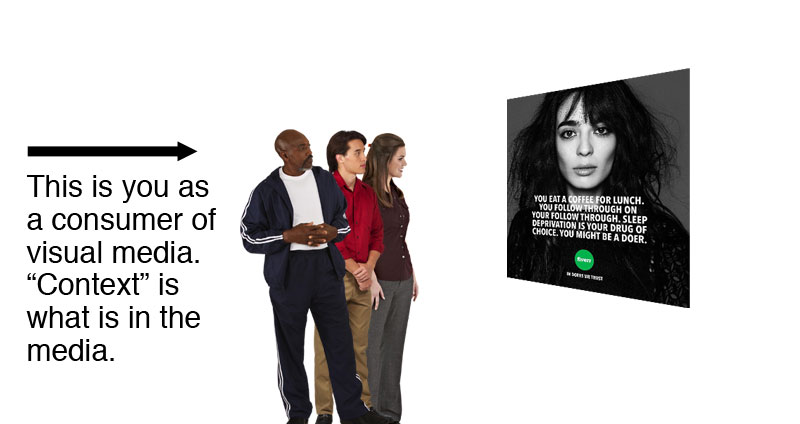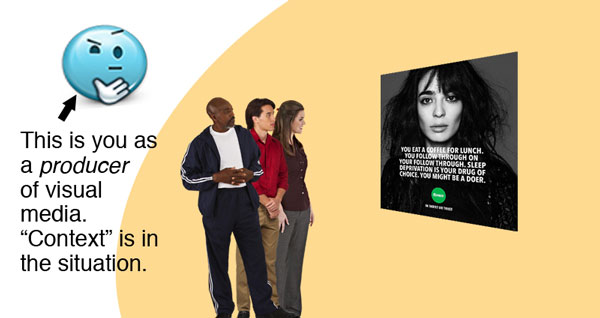Main Body
About Visual Media
The focus of COM 480 – Visual Communication is on the use of visual media as a means for conveying information to an audience. In particular, we will limit our attention to the use of still imagery because of the vast, openly available repositories of visual media and the simplicity of manipulating them.
You will discover a lot of similarities between the principles of formal writing and the principles of using visual media in purposeful communication because, ultimately, you will be communicating to an audience of humans – and humans have the same cognitive needs for information to form meaning no matter which medium is used.
Essentially, human brains are “pattern making machines” that rely on assembling bits and pieces of information into a coherent whole in order to make sense of a message. The human brain cannot bear having empty gaps of information and will often fill that gap with something, even if it is the wrong information. The human brain also dislikes ambiguity. The brain doesn’t just want messages to have meaning – it wants messages to mean something conclusive and for it to fit into one’s personal reality.
Humans are also very attuned to their personal identity, situations, attitudes, beliefs, values and expectations. When humans encounter messages, they interpret them according to their unique perceptions as well as from the influence of larger cultural, political, religious, or moral frameworks. This is why your messages will require considering more than your own personal point of view or context as a basis for communicating to an audience.
The value of this course will be in how you practice crafting coherent messages and narratives that serve your audience’s cognitive and humanistic needs so that you achieve your intended communication goal, whether in an academic environment or in professional practice.
In summary, everyone in this course has been a consumer (on the receiving end) of visual media. Your challenge in this course will be to go beyond being a consumer of visual media to becoming an effective and conscientious producer of visual media.
 |
 |
To achieve this, you will need to draw upon the following sets of foundation knowledge:
- Organizing Principles: Context, audience, and purpose.
- Rhetorical Strategies: Communications techniques used produce a particular effect on an audience.
- Use of Creative Commons resources: Locate images that are available for reuse under Creative Commons license and attribute them appropriately.
- Ethical use of imagery: Present imagery and graphical representations of information that do no mislead the audience or misrepresent reality.
- Narrative form and transition: Assemble individual messages and show connections between them so that it feels like a coherent whole to your audience.
The following video from the Purdue Online Writing Lab (OWL) describes the basic elements of Visual Rhetoric.

